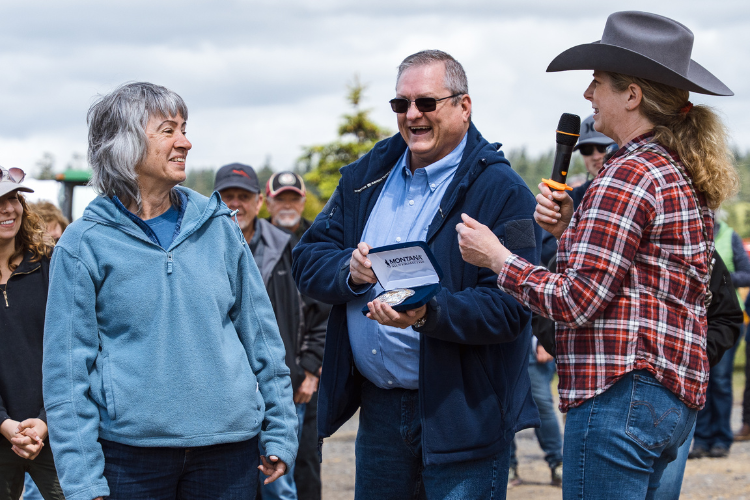Climate Change and Food Production
posted on
February 5, 2024

The Thurston Conservation District recently brought together farmers, producers, and chefs for a celebration of local food and a fireside chat about climate change and food production.
With panel guests representing farmers (Genine Bradwin of Kirsop Farm), producers (Sash Sunday of OlyKraut), chefs (Elise Landry of Chicory Restaurant), and ranchers (me!), we had an insightful and wide-ranging conversation about the farm-to-table food system and climate change.
In some ways, all of us involved in local food systems are facing similar challenges. We're all facing increasing costs (whether it's costs for hay, produce, or healthcare) and feeling the pressure to keep prices affordable for the local community. And we're all seeing the impacts of climate change first-hand.
At Colvin Ranch, there's about a mile and a half of Scatter Creek that winds through the property. In recent years, the creek has dried up completely in sections earlier in the summer, which means that we haven't been able to graze cattle in some of the more remote pastures when grass is plentiful.
We're looking ahead and planning for the infrastructure that we'll need to deal with the impacts climate change at the ranch, and we're fortunate to work with partners at Natural Resources Conservation Service, U.S. Fish and Wildlife Service, Ecostudies Institute, and others to implement projects that will help mitigate the changes we're seeing.
So what can we as consumers do? Sash said that when people ask restaurants to features locally produced food like OlyKraut by name, it encourages restaurants to invest in buying from local producers, even though it's more expensive.
From the restaurant perspective, Elise asked for understanding when the menu changes because certain produce is only available locally during certain times of the year.
And when it comes to buying local, supporting organizations like the Southwest Washington Food Hub helps farmers like Genine by making it easier get produce delivered to lots of customers efficiently.
In the face of climate change, the best outcome for our community in the farm-to-table system is for all parts of our local food systems to work together. When the local farmers and ranchers who raise our food can work with local processors to prepare and package it, and work with local distributors and retailers to make it available to customers, and work with the local chefs who create the delicious and memorable experiences from the fruits of our labor, then everyone benefits. And that's a win for the community as a whole.
Thanks to Sarah Moorehead, Executive Director of the Thurston Conservation District, for bringing together so many people who care about food and our community.



